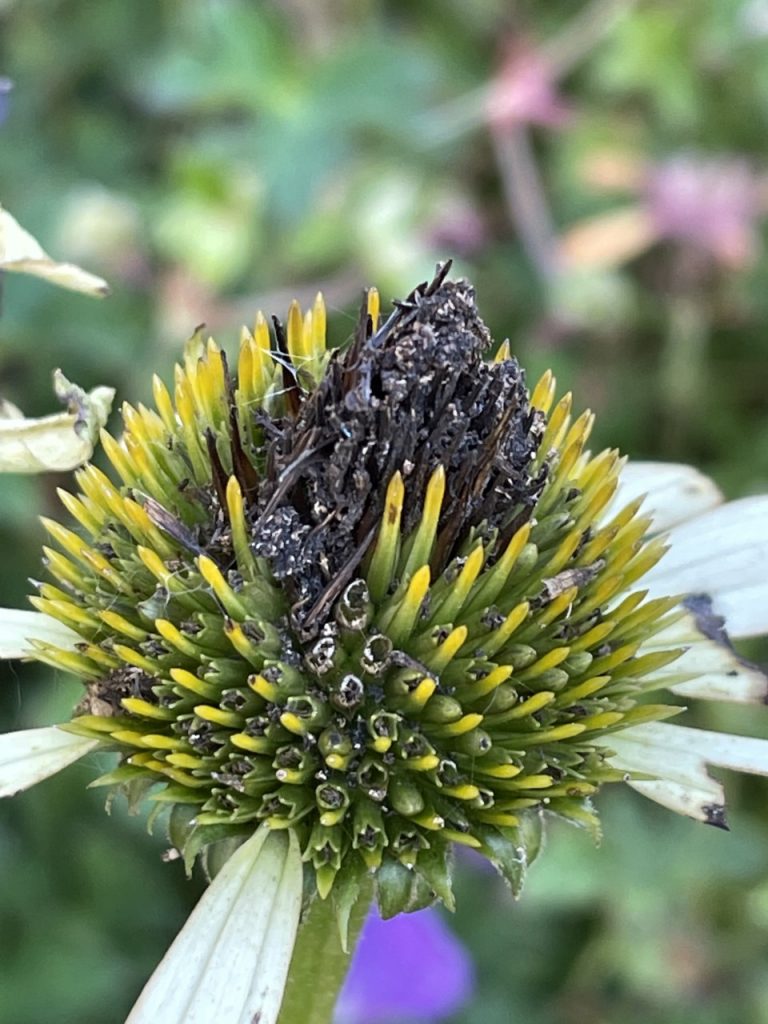Over the last couple of years, our hort team began seeing black, disfigured masses at the centers of echinacea flowers. Puzzled, they researched the issue and discovered the cause—sunflower moth (Homoeosoma electellum) larvae inside the cone, eating the flowers from the inside out.
“It doesn’t look good, aesthetically,” says Andy Brand, Interim Director of Horticulture, “but more worryingly, other pollinators appear not to favor the disfigured flowers, and the plants won’t set seed.”
With multiple, overlapping generations throughout the growing season, the larvae are difficult to control. Adult sunflower moths lay eggs at the base of flowers found in the Asteraceae family—echinacea, sunflowers, black-eyed Susans, marigolds, cosmos, coreopsis, and asters—and larvae feed on pollen and florets before tunneling into seeds. Some larvae pupate in the flower heads, but most drop to the ground to pupate underground or beneath leaf litter.
“We started noticing the moth’s populations increasing over the past couple years,” Brand continues, “but they might have been here earlier. We’re growing more echinacea, so that means more food for them.”



